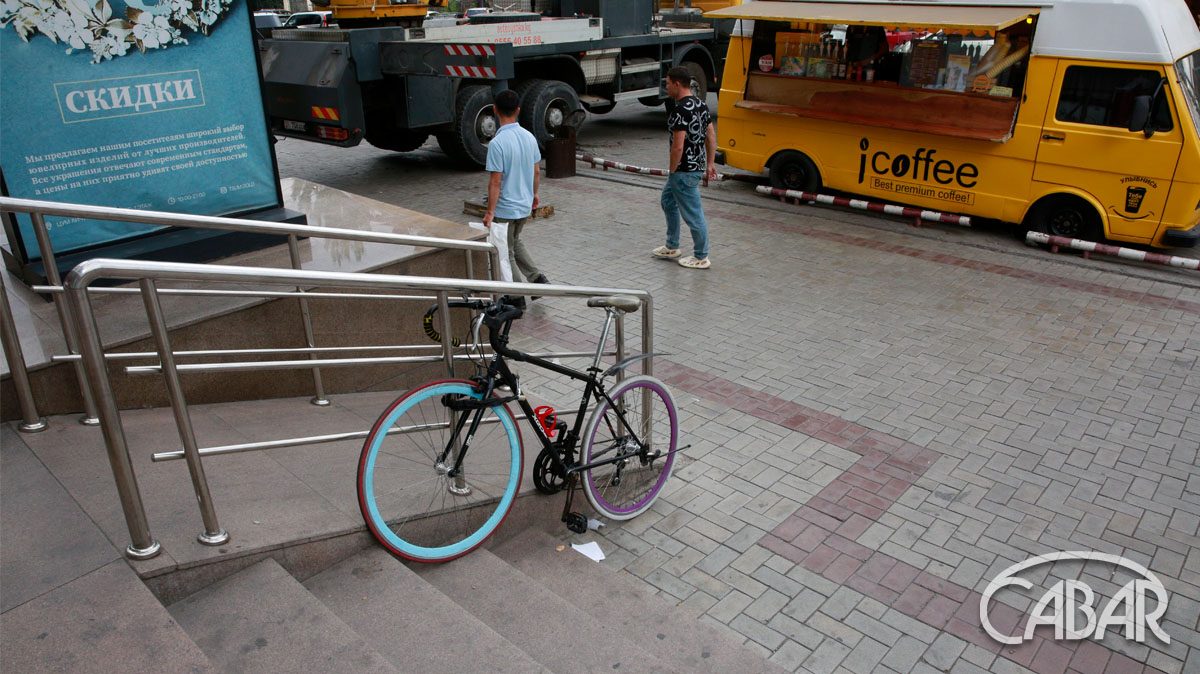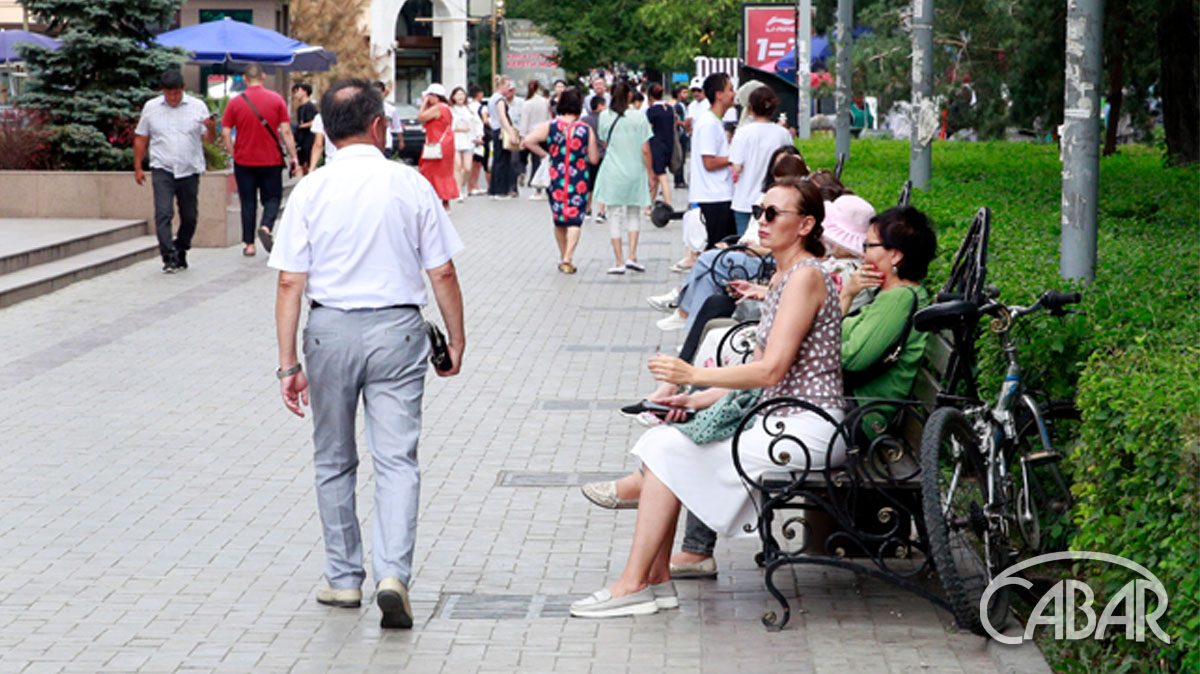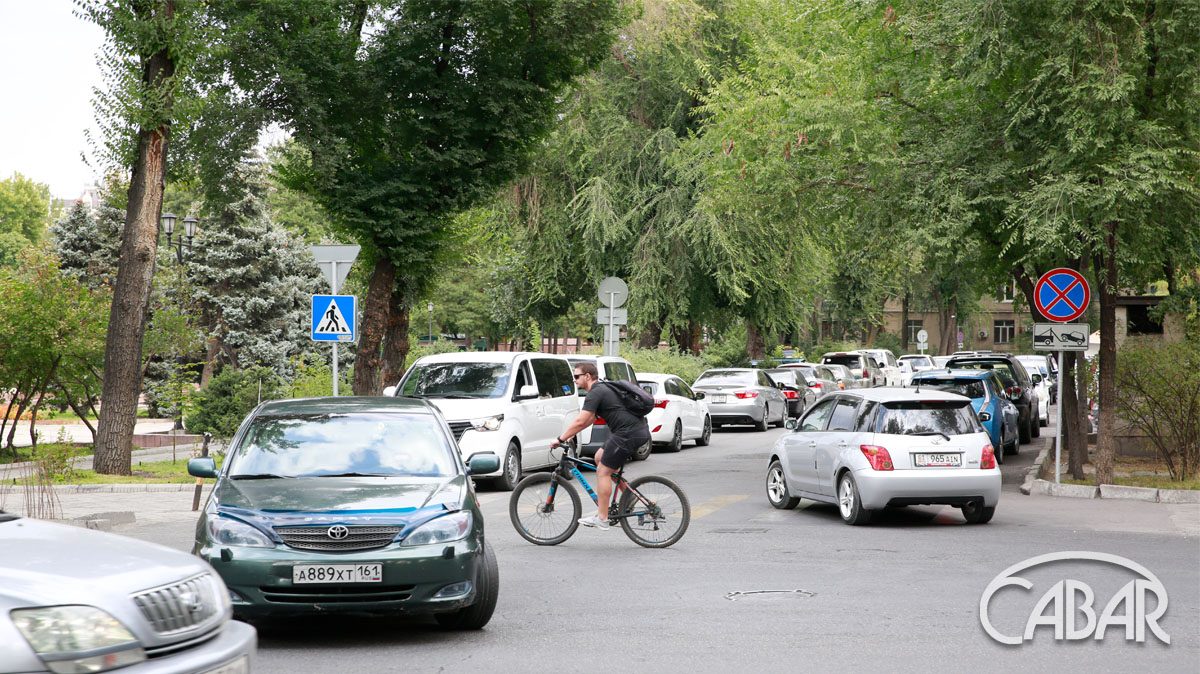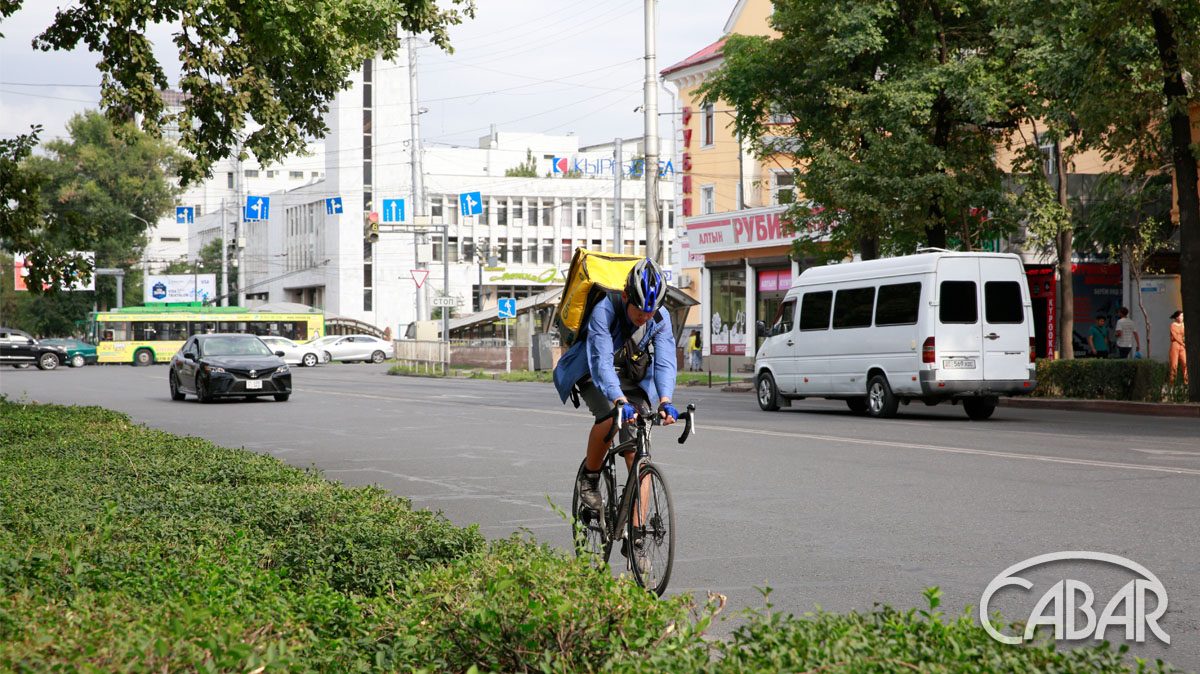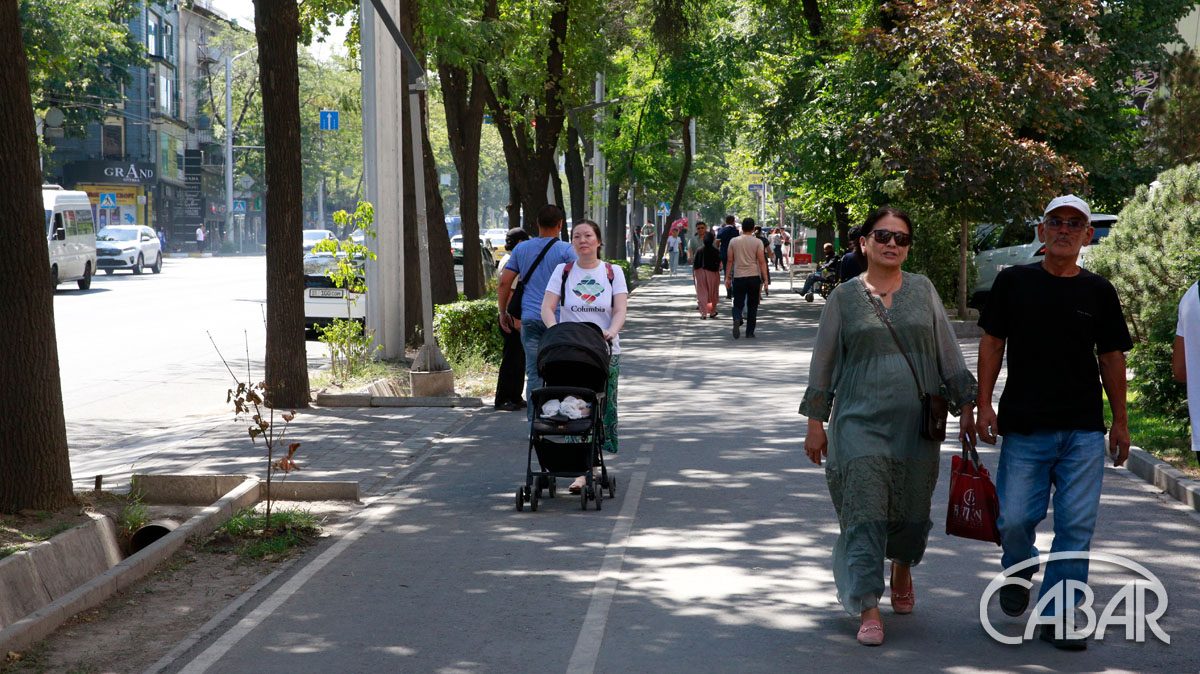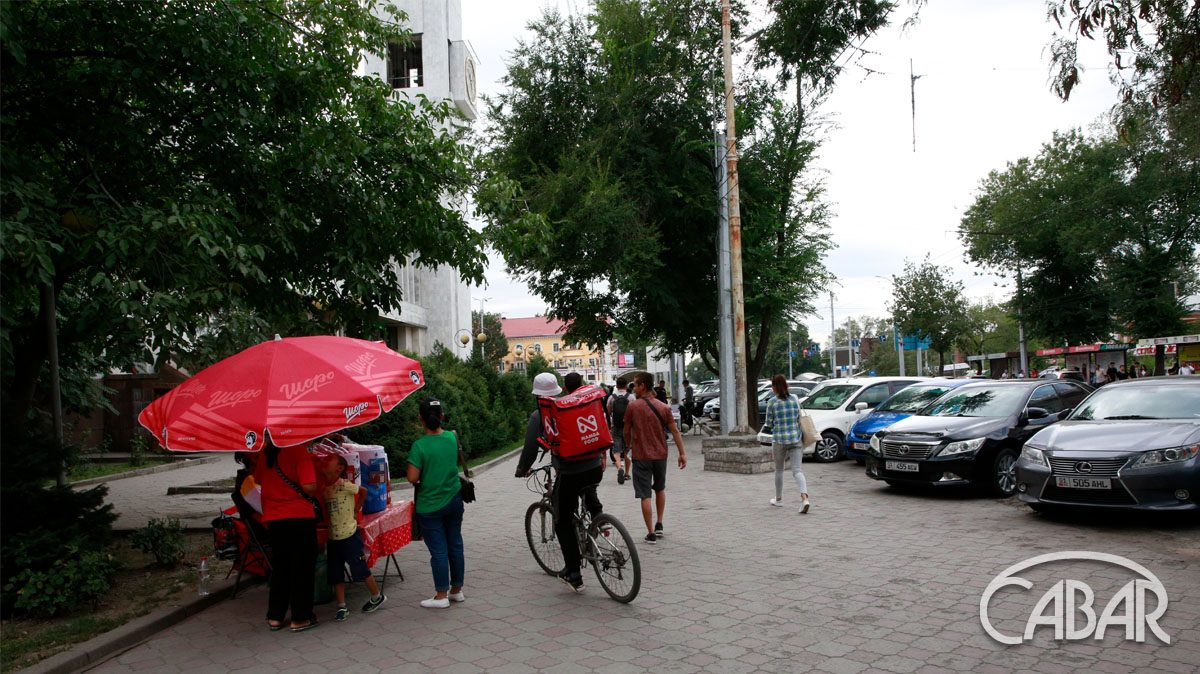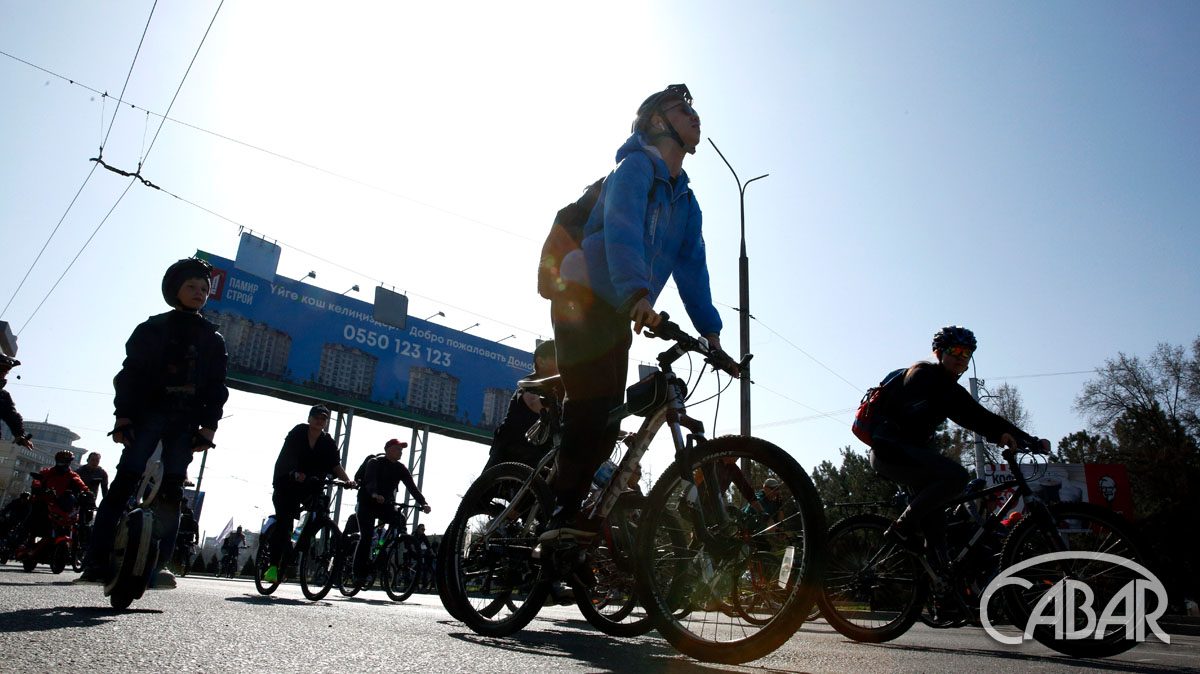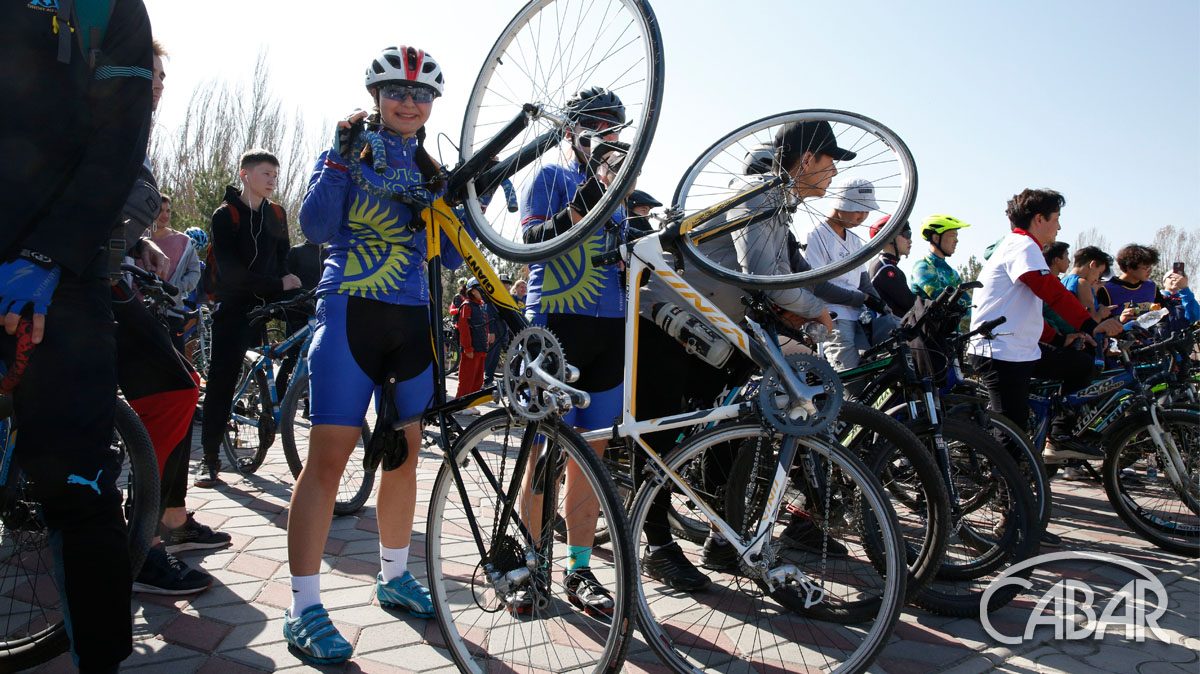The mayor’s office of Bishkek has reported development of cycling infrastructure in the city for many years. However, according to citizens, it is almost impossible to ride more than 200 metres in the city “unsurprisingly”.
Cycling activist Cholpon Asanakunova has been moving around the town on her bike for 14 years. According to her, a car is expensive, while a bike is cheap and eco-friendly compared to cars or municipal transport. However, according to the girl, the cycling infrastructure in Bishkek is fragmentary and sometimes unreasoned.

“Of course, you can ride around the town securely within few blocks, but you have to get up at 5 am, when there are no cars or people around,” Asanakunova said. “However, there’s still some surprise waiting for you at some place.”
And there are a lot of “surprises” to expect. For example, potholes in the pavement, which are caused by manhole covers. Such potholes make it uncomfortable to ride a bike, and can even cause damage to your tyres. Moreover, a pothole is absolutely invisible at night, which is big with consequences.

The absence of good bike ramps make its “contribution” to the life of cyclists. In such moments, cyclists have to stop and raise their bike stairs.

This is the underpass in the very centre of the capital, but it is quite inaccessible for cyclists. The steep ramp slope is not only uncomfortable, but also very dangerous.

There are no wheeling ramps on the other side of the underpass. Again, a cyclist has to get off and carry the bike up and down the stairs. A bike should be lifted slightly above the stairs because it is quite uncomfortable to roll it up or down. And given that many bikes weigh nearly 17 kilograms, it causes even more inconvenience to cyclists.

One more problem is that the city has few bike parking areas, and what is available is insufficient for the citizens.

Therefore, cyclists have to secure their bikes to any suitable object – a fence, a handrail, or a bench. This is uncomfortable for both the cyclist and those around them. But what’s more important is that the security level is low.
Another problem is infrastructure. According to Cholpon Asanakunova, the cycle lanes on the pavements made by the mayor’s office is a good thing, yet they do not solve the issue.

Cycle lanes are full of conflicts as pedestrians often occupy such cycle lanes, and cyclists have to cycle on a pavement. According to Asanakunova, it all happens because there is no regulated system available.

“According to the mayor’s office, the town is not meant for cycle lanes technically, but this is not so,” Cholpon said. “It is more a point of priorities that the metropolitan authorities set. Moreover, there is a global experience of cycling infrastructure and it can be well applied here.”
Besides, according to Asanakunova, the city council has to have a roadmap not only for cycling infrastructure, but also for the road network in general.
“It should be solved as a whole, i.e. cyclists, motorists and pedestrians should co-exist, but we don’t have such a strategy in place. At least, I don’t see it in our city streets,” the activist said.
Ulan Uezbaev, deputy director of transport and development of road and transport infrastructure of the mayor’s office of Bishkek, said in his comment to CABAR.asia that the strategy of road infrastructure development was developed back in 2005. According to him, it is a part of the general urban plan.

“Based on this plan, we obtain authorisations for construction of any facility in Bishkek. The priority is given to the safety and security of citizens and visitors in the capital,” the official said.
At the same time, cyclists emphasise that citizens have no culture. According to Meerim Salimova-Sataeva, an honorary member of the cycling community of Kyrgyzstan, pedestrians often pose obstacles.
“Now cycle lanes are available along Manas Avenue, Baitik Baatyr street, from Chui Avenue to the village of Orto-Sai, and along the Yuzhnaya Magistral on both sides,” Salimova-Sataeva said. “However, they are well used by pedestrians and children. But it is highly dangerous for them! And sometimes harmless-looking mothers can swear at cyclists. And it shows the culture of our society.”
Members of the cycling community of Kyrgyzstan have repeatedly addressed public authorities asking them to develop the culture of cycling. They have also initiated various events, distributed leaflets among pedestrians and drivers that emphasised that cyclists are also road traffic participants. But the authorities involvement is a must as mass-participation cycling events such as cyclosportive or opening of the cycling season that bring together hundreds or even thousands of cyclists need to be organised in closed streets or escorted by the Main Department of Road Safety.
As to rural areas in Chui region, the situation with cycling zones, cycle lanes, cycle paths or just road guards is miserable, mildly speaking. They are simply absent, so cyclists have to cycle on the roadway.
A common paved roadway is a rare thing in the most of regional villages.

“It is very dangerous to cycle on the roadway that have no road guards,” Meerim said. “Even during the pandemic, when roads should have been empty, two of our senior mates have died on the route Bishkek-Manas Airport. They were training for the contest. They have been hit by a drunk driver.”

Members of the cycling community have a few recommendations that the authorities could use to improve the cycling areas in the city. According to Salimova-Sataeva, cycle paths should be painted other than the colour of the main road to be easily discernible. Moreover, cycle paths should be separated not by a line, but by a kerb. This principle must be followed at routes and highways.

In turn, Bishkekasfaltservis reported that this year no cycle paths will be built in the capital.
“We are carrying out the repair of pavements on seven streets. We are also considering now if we can combine the cycle path with the pavement along Abdrakhmanov/Baitik Baatyr Street from Zhibek Zholu Avenue to Yuznhaia Magistral. If funding is approved, we’ll start the operations,” according to the press service of Bishkekasfaltservis.
While officials resolve financial issues, approve plans and itemised lists, urban residents have to grateful for what they have.
Therefore, many Bishkek residents go to mountains if they want to cycle. There are no obstructive pedestrians, cars, and paved roads there, but one can breathe in that fresh mountain air.




